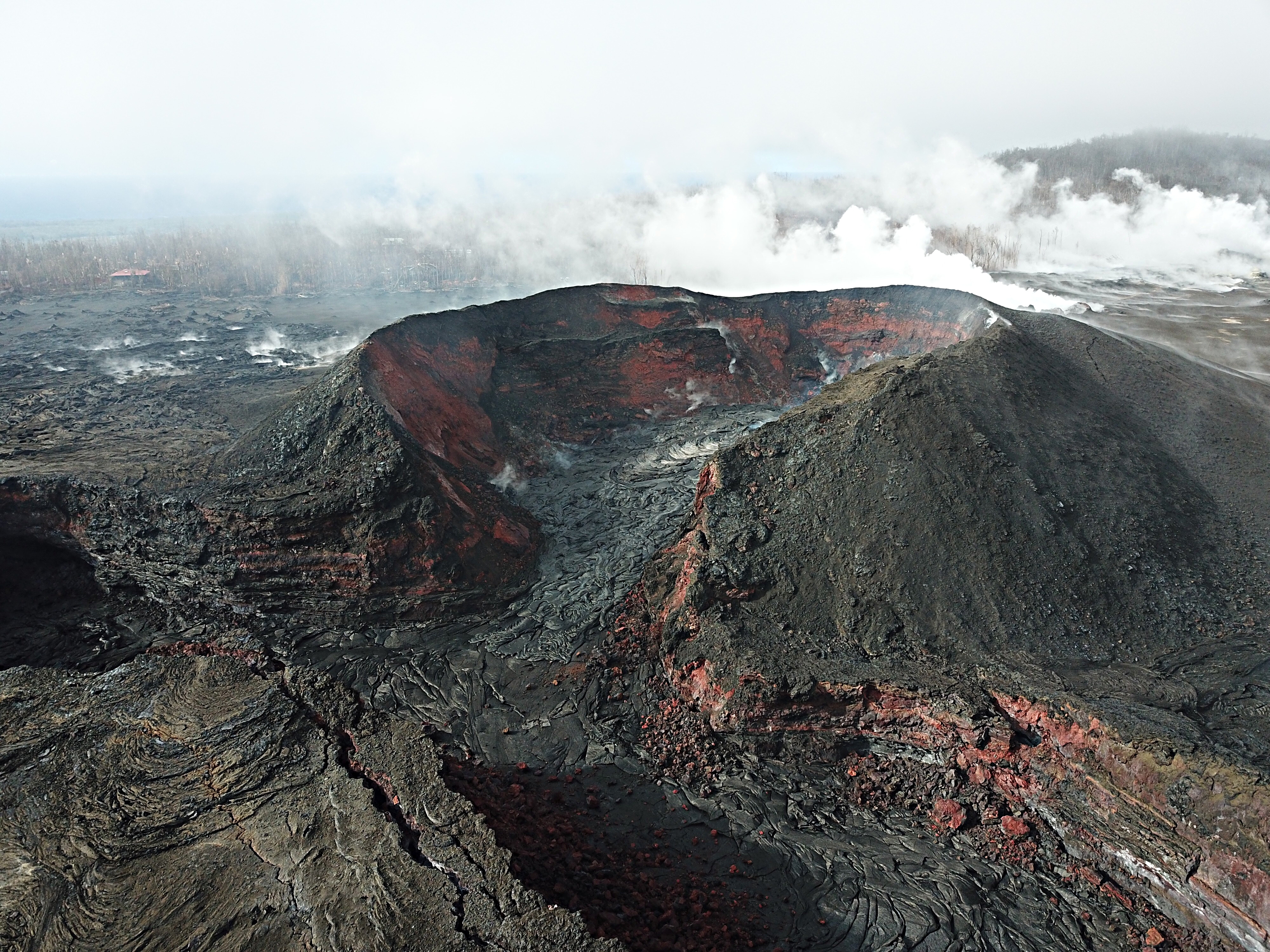Series of Small Collapses Occurs at Puʻu ʻŌʻō

Incandescence from Fissure 8 was noted a couple of times overnight between Sept. 8 and 9, 2018, but no spattering or glow was visible during the Unmanned Aircraft Systems overflight around 8 a.m. the morning of Sept. 9, as shown here. Lava within the Fissure 8 crater looked much the same as yesterday, except that the new cone appeared less prominent. Steam in background is due to recent rainfall. PC: USGS HVO
The USGS Hawaiian Volcano Observatory issued a Kīlauea activity update on Sunday, Sept. 9, 2018, at 9:40 a.m.
On Kīlauea Volcano’s lower East Rift Zone (LERZ), minor amounts of incandescence and fume continue to be visible within the Fissure 8 cone. Small lava flows have been observed within the Fissure 8 cone; however, none have extended outside the walls of the cone.
There is no change in overall activity from observations over the past several days.
Seismicity and ground deformation remain low at the summit of Kīlauea. Small aftershocks from the magnitude-6.9 earthquake in early May continue to occur on faults located on Kīlauea’s South Flank.
On Saturday, Sept. 8, Puʻu ʻŌʻō crater experienced a series of small collapses. These produced episodes of visible brown plume throughout the day (the most prominent at about 10:30 a.m.) and generated small tilt offsets and seismic energy recorded by nearby geophysical instruments. The collapses had no discernible effect on other parts of the rift, though we will continue to monitor for longer-term changes.
Tiltmeters in Kīlauea’s middle East Rift Zone continue to record small amounts of inflationary tilt, which may be a sign of refilling of the rift zone. The rates have been steady over the past week and did not show a short-term change following Saturday’s collapses at Puʻu ʻŌʻō.
Sulfur dioxide emission rates at the summit, Puʻu ʻŌʻō, and LERZ are drastically reduced; the combined rate is less than 1,000 tons/day, which is lower than at any time since late 2007. SO2 emission rates from LERZ vents were below 20 tons/day when measured on Sept. 5, close to the detection threshold of the measurement technique.
















